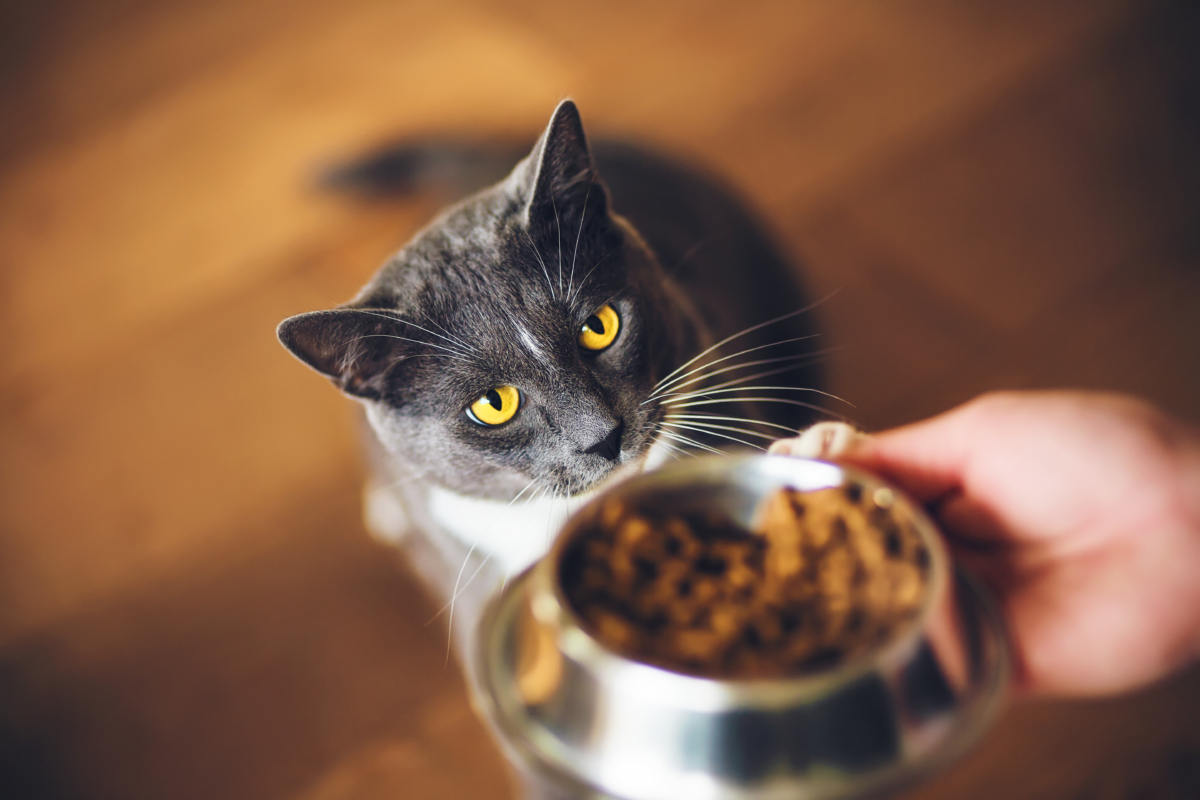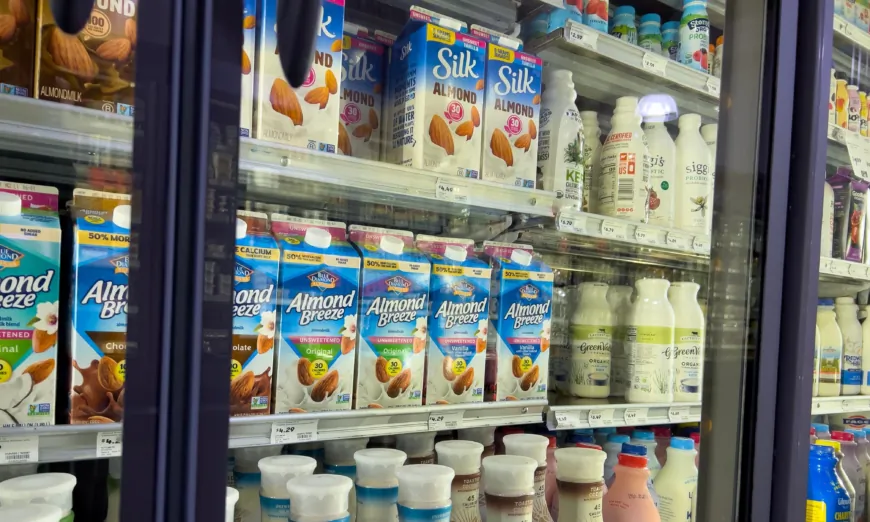The good news is that vwe can simply stop. this indication is now based on fifty years of science..
It is also likely that the majority of us tolerate this thickener well enough but not all. Better yet we can do without. You find it by the way in most ice cream and sour cream along with other thickeners like cornstarch.
Removing it from the food supply chain is an obvious step and completely doable. Doing this with sugar is almost impossible and that demands an evolutionary transition also including a taste transition as well.
Folks, we really do need to rethink and yes regulate our whole food supply chain top to bottom and it is certainly not even difficult. What can help is to identify desired goals and to then transition even ten percent per year. This is then a natural evolution which can also be trackerd through meta trands in the bstats.
There is sound reason to fortify refined foods with vitimins. The ywould otherwise be almost useless..
Carrageenan—The Thickener That’s a Sickener
How a common food additive has been causing serious health implications
Jun 30 2023
https://www.theepochtimes.com/health/carrageenan-the-thickener-thats-a-sickener_5348369.html
Editor’s Note:
Believe it or not, most of the processed food we eat contains a thickening agent called carrageenan. Studies suggest this food additive is a toxin that contributes to food intolerances and allergies. In the book, “A Consumer’s Guide to Toxic Food Additives” authors Bill and Linda Bonvie introduce the many additives in our everyday food and ways we can identify and eliminate them from our diets. In this book excerpt, we will be looking at carrageenan.
—
Judging from the number of commercials on television for drugs designed to relieve various gastrointestinal ills, one can easily conclude that millions of Americans are afflicted with a variety of such problems, ranging from bloating and discomfort to serious conditions such as irritable bowel syndrome and ulcerative colitis.
Could it be, however, that many of these maladies are the result of a single “badditive”, one that’s long been considered so safe by virtue of being “natural” that it’s even allowed in organic food, despite a growing body of scientific evidence that it’s anything but?
The answer is a resounding “yes.” If you’re among those who suffer from chronic stomach issues, it’s quite possible that they might be alleviated simply by removing from your diet any processed foods that contain the ingredient carrageenan.
Carrageenan is used in a wide variety of processed foods and beverages, ranging from coconut water, low-fat dairy products, and dairy substitutes to nutrition bars, deli meats, and precooked chicken. It serves as a thickening agent, giving food a nice texture and fatty “mouth feel.”
However, this tasteless, non-nutritive seaweed derivative has long been shown to cause harmful gastrointestinal inflammation and intestinal lesions.
It can also be replaced with safer ingredients that serve similar purposes, such as guar gum (which FDA researchers back in 1988 found did not produce colon damage in lab rats, whereas carrageenan did). [1] In some instances, all it takes to achieve the same effect is simply to shake a product’s container before consuming its contents. Yet carrageenan continues to be used by many food companies, including some that claim to have only “healthy” ingredients in their products.
How Regulators Muted the Alarm Set Off by Carrageenan Research
Concerns about the safety of carrageenan date all the way back to 1969, when researchers linked its use in food to gastrointestinal disease and colon cancer in laboratory animals.
In 2013, The Cornucopia Institute, a non-profit farm policy research group based in Wisconsin, detailed the scientific studies and other evidence against this ingredient in a report titled Carrageenan: How a “Natural” Food Additive Is Making Us Sick, which strongly urges consumers to avoid foods containing it. The report noted that “[f]or individuals who consume carrageenan on a regular or daily basis, the inflammation will be prolonged and constant, which is a serious health concern since prolonged inflammation is a precursor to more serious disease,” and pointed out that there are over 100 human diseases, including cancer, associated with such constant inflammation. [2]
The Institute also sent a letter to then-FDA Commissioner Margaret Hamburg requesting reconsideration of a citizen petition filed in 2008 that asked the FDA to ban the use of carrageenan in food, which was turned down by the agency in 2012. The petition had been submitted by Dr. Joanne Tobacman, a physician-scientist at the University of Illinois at Chicago, who had spent almost two decades studying the effects of this additive and published 18 peer reviewed papers on the subject.
“When a body of publicly funded scientific literature points to harm from consuming a common, widely used yet unnecessary food ingredient, the FDA should act in the interest of public health,” said the letter, which was signed by Charlotte Vallaeys, the Institute’s Farm and Food Policy Director, who noted that every claim that supports the safety of carrageenan in foods and beverages “can be refuted, based on strong scientific evidence.”
Her letter also included an appendix of studies that were both favorable and unfavorable to the petition, pointing out that those supporting it were funded by public and private institutions with no financial interest in the outcome, whereas the ones that didn’t were “almost exclusively funded by the industry that profits from the continued use of carrageenan in food.”
The letter further noted that “there are no benefits to society or public health from adding carrageenan to foods or beverages,” which is done “solely to change the texture of food.” [3]
As in so many other cases involving entrenched food additives, the FDA declined to act on that request.
Undeterred, in April of 2016, The Cornucopia Institute came out with an updated 49-page carrageenan report bearing the subtitle New Studies Reinforce Link to Inflammation, Cancer and Diabetes, which includes detailed summaries of scientific findings from 1969 through 2016, charts and graphs on technical issues, consumer responses related to carrageenan and gastrointestinal symptoms, and even a section devoted to food manufacturers’ responses to scientific data about carrageenan.
In other words, this is more than merely a superficial evaluation. As you read through it, you soon realize that the staffers of the Institute have really done their homework on this issue and put together what you might call a gut-wrenching “rap sheet” that should be setting off regulatory alarm bells. As of this writing, however, their efforts and expertise appear to have made not one iota of difference to the FDA’s policymakers, who, as other instances chronicled in this book demonstrate, are seldom known to declare a food additive they have previously approved to be unsafe and order its removal.
Carrageenan, as the latest report notes, comes from red seaweed and can be processed into either what’s called “food grade” or “degraded” varieties. Degraded carrageenan, recognized as a “possible human carcinogen,” is not permitted in food by virtue of being extremely inflammatory—so much so that it has been extensively used in scientific studies to induce inflammation in laboratory animals in order to test certain drugs.
While “food grade” certainly sounds safe enough, numerous studies have shown even small levels of this version, which is commonly added to food products, are enough to cause inflammation in the human colon as well. That, the report claims, is due to carrageenan having “unique chemical bonds not found in other seaweeds or gums” that have been found to trigger an immune response in the body similar to that caused by pathogens like Salmonella, which in turn causes inflammation of the digestive tract. And prolonged inflammation, it points out, can lead to other serious diseases, including cancer. [4]
Perhaps most disturbing, however, are findings that “food grade” carrageenan isn’t really the harmless product it’s cracked up to be. For one thing, none of the samples analyzed by six different laboratories at the request of the European Commission were entirely free of the degraded version considered to be a cancer risk, with one lab reporting that two-thirds of its samples had in excess of 5 percent (the highest amount found in a sample being 25 percent). For another, studies that simulated the acidic conditions in the human gastrointestinal tract found that food-grade carrageenan could be converted into the “degraded” variety through the process of digestion. [5]
How Eliminating Carrageenan From Their Diets Has Changed Some People’s Live
s

To get an idea of just how disruptive to the digestive system carrageenan can be, you need look no further than the “Consumer Responses: Carrageenan & GI Symptoms” section in the Cornucopia Institute’s latest report on this ingredient and its effects.
In response to an online survey posted by the Institute over a three-year period, some 1,397 individuals reported either that their gastrointestinal symptoms had completely disappeared or greatly improved after giving up foods containing carrageenan.
A resident from Manitoba, Canada, for example, describes having suffered “tremendous stomach cramps, body aches, and extreme bloating” lasting from twenty-four to forty-eight hours after eating various foods. She then discovered from a food journal that these foods all contained carrageenan. Since removing carrageenan from her diet, she said, the problems stopped; however, she noted that she had to be very careful not to ingest even the smallest amount, as it will cause her “hours of suffering.”
Another respondent from Morgantown, West Virginia, tells of “nonstop throwing up and sweats/chills,” visits to the emergency room, needing fluids and medication, and becoming severely dehydrated. All tests failed to find a cause except one, which involved a barium drink containing carrageenan. When the drink caused profuse vomiting, she realized that the ingredient was the probable cause.
Then there’s the St. Louis resident who describes having gastrointestinal pain that “would literally incapacitate” her after consuming ice cream and coffee shop smoothies, though she was not lactose intolerant. After noticing that all the products involved had carrageenan in common, she started avoiding the additive and is now able to do things she couldn’t do previously, such as going on overnight camping and canoeing trips.
As a woman from Ottawa, Canada, puts it, “Now that I have eliminated carrageenan from my diet, I can finally lead a normal life.”
How Consumers Can Ultimately Call the Shots
As the Cornucopia Institute pointed out in its letter to the FDA, some food manufacturers are already replacing carrageenan with other thickeners and stabilizers, or eliminating thickeners altogether and asking their customers to shake the product before consumption. “If carrageenan is prohibited, the food industry will quickly adapt,” it maintained. In some cases, that appears to be exactly what’s taking place—with pressure from enlightened consumers serving as the catalyst for change.
A perfect illustration of this is the 180-degree turnaround done by WhiteWave Foods, whose brands include Horizon and Silk. The company’s resistance to any suggestion that carrageenan be removed from its products is chronicled in the Institute’s initial 2013 report, which tells how consumers who posted their concerns on Horizon Organic’s Facebook wall were assured that food-grade carrageenan was safe. When these consumers replied that scientific studies showed otherwise, they were given a perfunctory response about how the company was “always monitoring and reviewing emerging science.” Furthermore, the report noted, the company’s vice president and chief lobbyist, despite being among those who provided the latest scientific findings about the additive’s harmful effects, ended up testifying in favor of keeping it in organic foods at the 2012 NOSB meeting. [6]
However, after “Food Babe” Vani Hari alerted the followers of her popular blog to the dangers of carrageenan, [7] WhiteWave totally reversed gears and announced plans in 2014 to phase it out of their brands, noting, “Our consumers have expressed a desire for products without it and we are listening!” The Associated Press quoted company spokeswoman Sara Loveday as stating that WhiteWave “still thinks carrageenan is safe, but decided to remove it because customer feedback has been so strong,” adding, “When you get to a certain point of how vocal and strongly a consumer feels about it, we felt it was time to make a change.” [8]
Apparently, then, such feedback is what’s really required to get this inflammatory additive and other pernicious ingredients out of our food. That begins with reading the ingredients label on products (even organic ones, where carrageenan is concerned), avoiding those with harmful additives, and letting the manufacturers of those foods know the reason why.
How To Keep Carrageenan Out of Your Best Friend’s Diet

Since carrageenan has remained in so many “people foods,” despite all the studies linking it to damage to the gastrointestinal system, it should come as no surprise that it’s also present in quite a number of canned pet foods—especially those made for cats.
Finding high-quality canned cat foods that don’t contain this red-flag ingredient can sometimes be a bit difficult. But if you want to keep Fluffy happy and purring and perhaps spare yourself and her unnecessary visits to the vet, there are some carrageenan-free products now being offered by pet-supply stores (such as Wild Calling and Nutro FreeStyle brands), as well as others that can be ordered online.
Unless a product is advertised as being “carrageenan free,” however, it’s always best to check the ingredients before purchasing it (just as with “people food”), since this ingredient is often hidden among more beneficial ones.

No comments:
Post a Comment